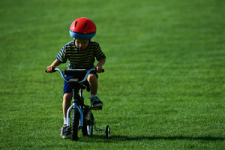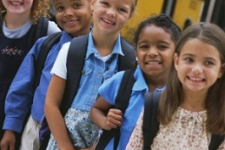Setting up a Classroom: Flexibility

The learning environment plays a huge role in helping students grow and in cultivating their opinions and confronting them with concepts. It is therefore important that we take pay heed to the different elements involved in setting up a classroom.
In today’s world, a classroom that encourages hands-on experience is an obvious plus. The […]
Learning by Repetition: Does it Work?

One way of developing a skill is to make it a stored routine in the students’ system. To make this happen, the most important first step is to bring the skill to a conscious level where the student is deliberately thinking about the activity (not necessarily the skill).
In other words, the student knows […]
Pictorial Communication in the Classroom

When I was growing up there were two kinds of kids – kids who could draw and kids who couldn’t draw. Kids who could not draw stayed away from art activities, and many later chose professions where drawing was not required.
The world is different today, and pictures are becoming a new language in […]
Assessment of Student Learning: Questioning and Discussion

Using the technique of questioning and classroom discussions for an assessment of student learning provides the teacher with an opportunity to increase their students’ knowledge and improve understanding at the same time. Teachers, however, are cautioned that they should ask thoughtful, reflective questions rather than simple, factual ones and then give students adequate […]
Developing Critical Thinking in Students

It is important to develop critical thinking in students. This skill set will help them deal with everyday situations with greater ease and responsibility.
There are many strategies that can be used to make students think
critically. Some of them are:
Classroom Assessment Techniques
In this technique, you let the student assess the lessons on an ongoing basis. […]
Behavior Intervention Strategies: Classroom Layout

One of the behavior intervention strategies that helps students to work and learn effectively in the classroom is classroom management.
Seating the student near the teacher is one tried-and-true method to increase on-task behavior. It is recommended that you follow a system of preferential seating. Preferential seating simply means that you seat the student […]
Autism in Children: Repetitive Behavior

Autism in children manifests itself through repetitive behaviors. These are attempts by a person’s sensory-motor system to develop control or protection from feeling overwhelmed.
Here are some examples:
Nick finds a piece of string. Once he has it, he twists and twirls it between his fingers. He seems mesmerized by the string and is upset […]
Using Smart Boards in the Classroom

A number of teachers may not be aware of the benefits of using a Smart Board in the classroom as a teaching tool. While the traditional white board already has everyone’s attention, the electronic device is a new technology that is slowly gaining popularity due to its interactive power.
The digital screen allows images […]
Understanding the Types of Temperament and Learning

Keirsey stated that there are four types of temperament. Understanding the different types of temperament is important to determine how we should deal with students in our classroom. The different types can be characterized by the following:
Sensible, Adaptable, Active (SP)
33% people have this temperament. They have a combination of sensate qualities and perceiver […]




